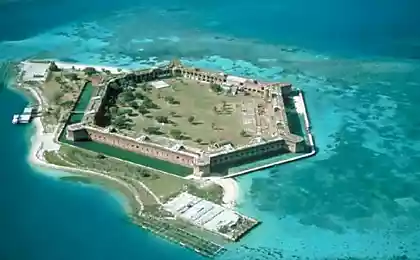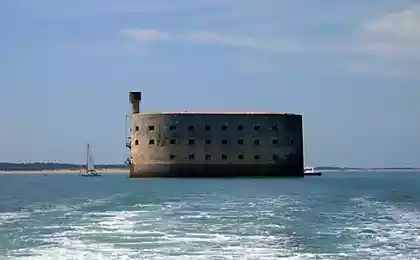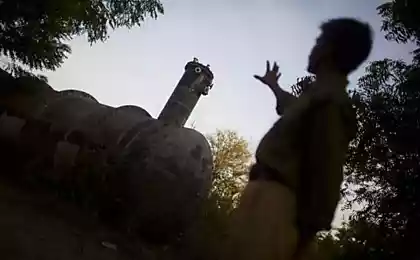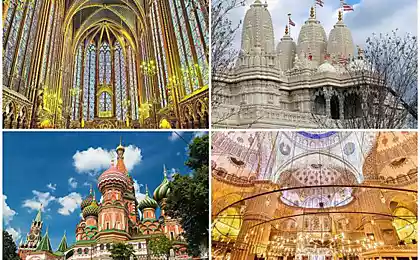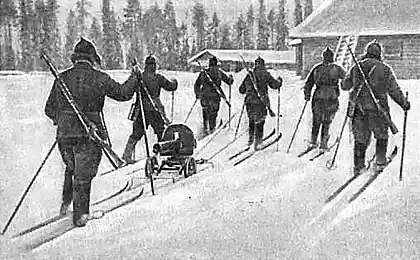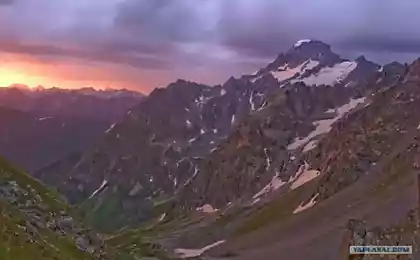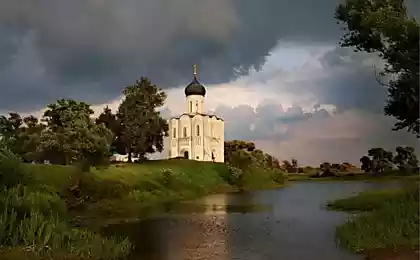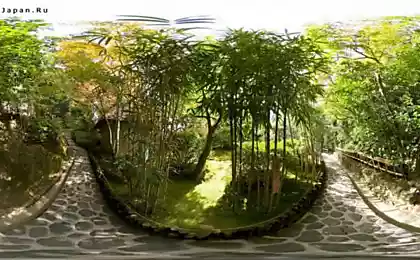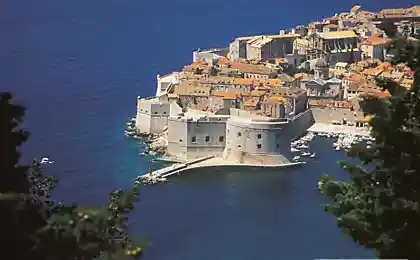5312
Chittorgarh Fort
The walls of the grand fortress called Fort Chittorgarh, whose area exceeds 280 hectares, rise above the plain and the town of the same name. Location Fort chosen by chance: the hill height of 180 meters dominates the countryside, and the area it is wide enough to accommodate her could the ancient capital of Rajasthan ...
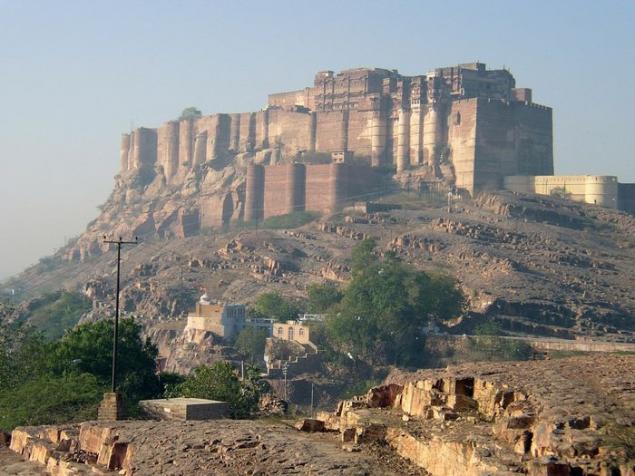
Yes, the modern capital is located in Udaipur. However, it was not always so. In the XII century King Fals Ravalpostroil grand city-fort, killing two birds with one stone in this way: the capital and updated, and a dowry for his daughter worthy carved. Chittorgarh Fort is very long, he served as the main residence of the rulers of mevarskih kind Sisodia. This is a huge fortress covers an area of about 300 hectares. Standing on the crest of a high cliff at an altitude of 180 meters, the impregnable fort of Chittorgarh witnessed three battles.
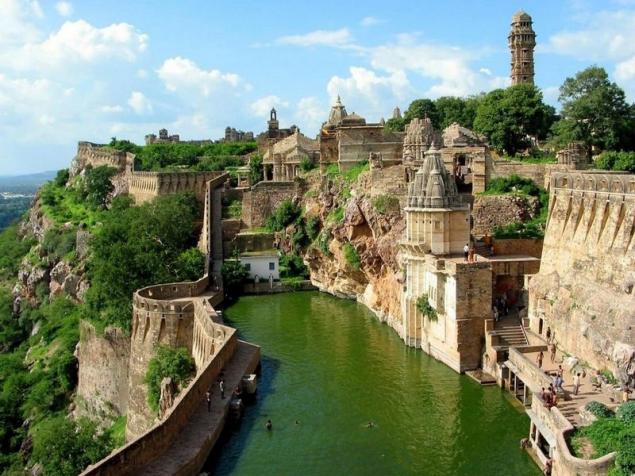
He was always very desirable prey for the Mughal and the first Chittor tried to conquer Delhi Sultan Ala-ud-din, and not only the fortress, but also the beauty queen Rani Padmini. But as soon as the troops of Sultan approached the fortress and men, the defenders of the fort were killed, thousands of women, led by fearless queen committed mass ritual self-immolation (Jauhar). So Ala-ud-din and did not get the desired.
In fierce battles defending the fortress, killing more than 30,000 soldiers Rajputs. Realizing that the capture of the fort - only a matter of time, the Queen, in order to save his honor, made a ritual self-immolation Jauhar. Together with her on fire voluntarily went about another 13 000 women. Deprived of the main goals, Ala-ud-din retreated, thinking that taking the fortress is not worth further casualties. But the bloody history of Chittorgarh is not over. Over the years, Bahadur Shah, the Sultan of Gujarat, made another foray into the impregnable fort. His troops clashed with Arima Rajput queen Ranidzhavaharbay, which appeared to defend the city. Army defenders defeated, the queen died in agony battle. Once again, thousands of women in the walls of the city committed Jauhar, preferring death to captivity. But the fortress stood at this time.
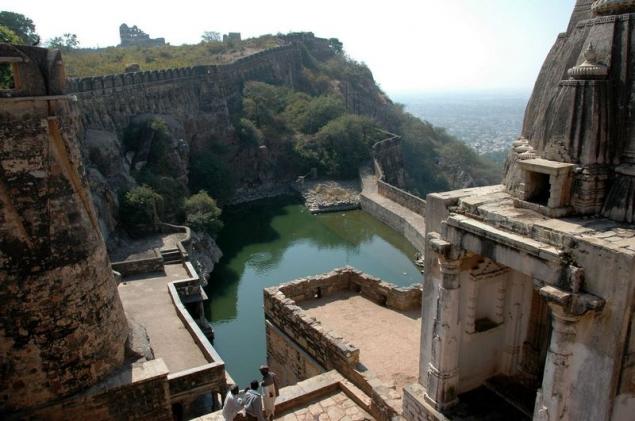
In 1535 he tried to win Chitorh Bahadur Shah. Again, the local women, led this time queen Rani Karnavati committed Jauhar. Again, the enemy was left with nothing. And in 1567 an attempt to take Fort Chittorgarh taken Mongol emperor Akbar. The power of his army was enough to overwhelm the defenses and troops to expel the remnants of the Rajputs of Chittorgarh. Since then, the capital of Rajasthan was moved to Udaipur, and left the fort forever. However, he was not forgotten. Chittorgarh has become a symbol of valor defenders of Rajput valor and women preserve the honor of the cost of their own lives.
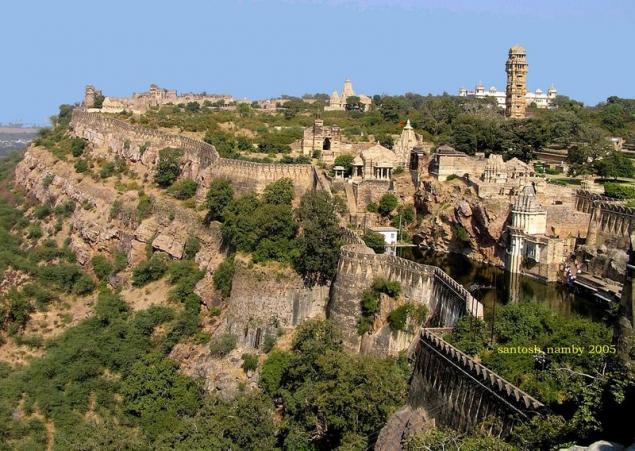
Look at this fort and to this day makes think about the valiant Rajputs, who once lived here. Well-designed palaces, magnificent cenotaphs, huge tall tower and now reminded of their brave and proud citizens, not surrendering to the enemy. Two huge towers Stambha Vijay (Victory Pillar) and Kirti Stambha (Pillar of Glory), built at different times, vivid evidence.
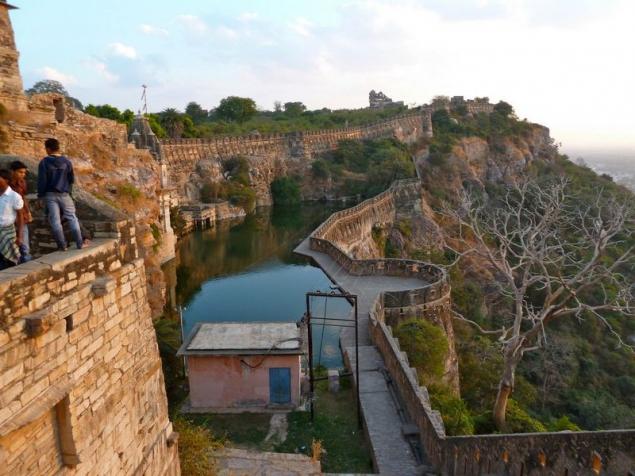
Pillar of Fame (Kirti Stambha)

Pillar of Fame (Kirti Stambha) 22 meters high was erected in the 12th century and is dedicated to Rishabha, the first of 24 Tirthankar. "Tirthankara (तीर्थंकर,« builder ford ") - in Jainism person who has attained enlightenment thanks to austerity and became a teacher and an example for all those who seek spiritual guidance. It is believed that tirthakary overcome baser feelings, such as anger, pride, deceit, desire, and built a ford across the "river of human misery».
Victory Pillar (Vijay Stambha)
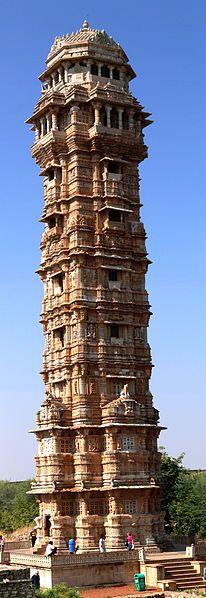
Victory Pillar (Vijay Stambha) much younger, it was built between 1442 and 1449 years mevarskim ruler Rana Kumbha to commemorate his victory over the combined armies of Malwa and Gujarat led by Mahmoud Khilji and dedicated to the god Vishnu. Many names tower plates contain the genealogy of the rulers of Chittorgarh Hamir until the Rana Kumbha. A great number of names sculptures of gods and goddesses, covering the entire tower can serve this tutorial Hindu iconography.
The city is already in the old days was provided with everything necessary, as evidenced, for example, extant reservoir. During the many sieges of this pool was the main source of water in the fort. Very beautiful place, covered with romance, despite this dramatic story. And even now, the local women washing laundry in it.
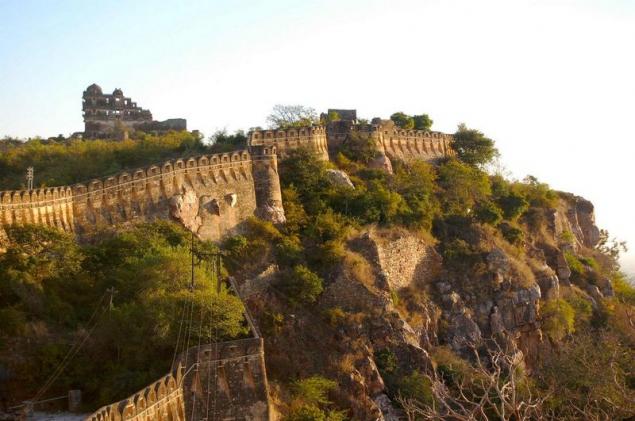
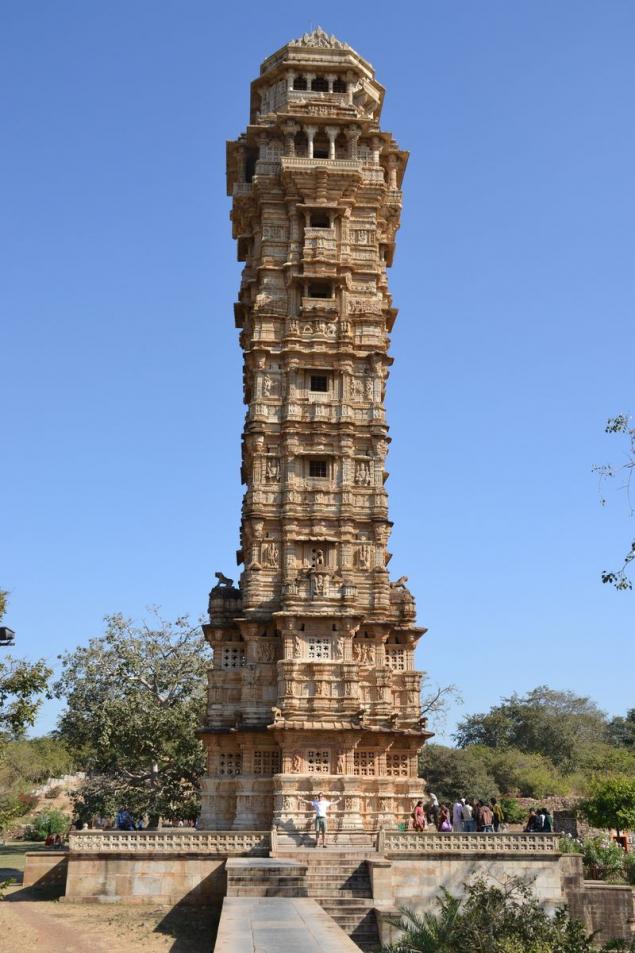
Rana Kumbha Palace is the largest and oldest palace Chittorgarh. Here was born the founder of the city of Udaipur Maharana Udai Singh. From his birth is a legend or rather the real story. Faithful maid Panna Dhay saved future ruler of enemies, replacing it on his own son as bait, and the little prince took a safety in a basket of fruit. As a result, her son was killed, and Maharana Udai Singh was saved. Also lived here the famous saint poet Rani World. This is the same palace, in the basement of which was arranged funeral pyre, where Rani Padmini along with other women committed Jauhar.

And here is the Palace of Rani Padmini itself.
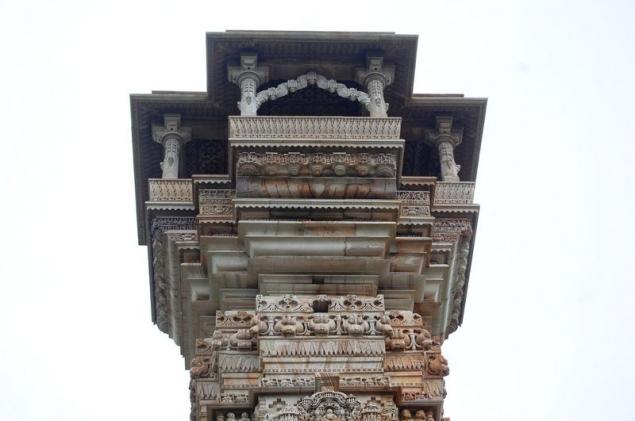
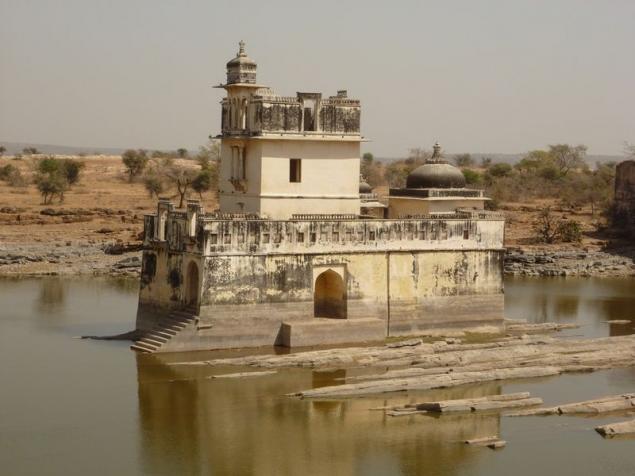
It was in this palace of Ala-ud-din was allowed to see in a mirror image of Rani Padmini, the wife of Maharana Rattan Singh. The mirror was placed under such an angle that as he did not turn, could not see the room of the queen, whose beauty is comparable with the Cleopatra, and the history of life were eternal legend in the history Mevarskogo state. Unfortunately, reliable images beauty has been preserved, we can only speculate about it, as she looked. That's how it is represented in the Indian cinema

Opposite the palace of Rani Padmini is the oldest temple Chittorgarh Kalika Mata Temple (Kalika Mata Temple), built in the 8th century to the Sun God, but in the 14th century was converted into a temple of the mother goddess Kali. And until now, pilgrims come here to worship the goddess.
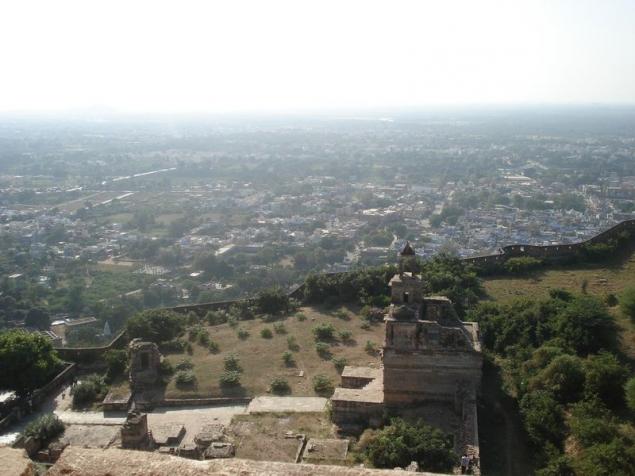
In Chittorgarh just over 130 temples, both existing and dilapidated and abandoned populated by monkeys after they have left the people. But the Fort Chittorgarh is very famous and popular, it is difficult to find a place untouched by the tourist or pilgrim.

Today Chittorgarh - a popular tourist attraction. It is the largest fortress in Rajasthan, besides very well preserved. On the territory of the fort was more than 130 temples. Most of them are in ruins or partially destroyed, but some have survived virtually intact. Having been here, it's hard to believe in bloody past Rajput fortress. Fort picturesque, the weather is usually sunny, and the overall impression created exclusively positive. Among the ruins of ancient palaces, temples and other remains of buildings stands tall tower Vijaya Stambaha. This is an eight wonder of ancient architecture perfectly preserved, drawing attention to each guest Chittorgarh. On the territory of the fort, in the "old town" is still inhabited. Their life is simple and looks more like a village than in the city. A feeling that for a long time almost nothing has changed. Except that instead of hordes of cruel invaders Chittorgarh now attacking troops armed with cameras tourists.

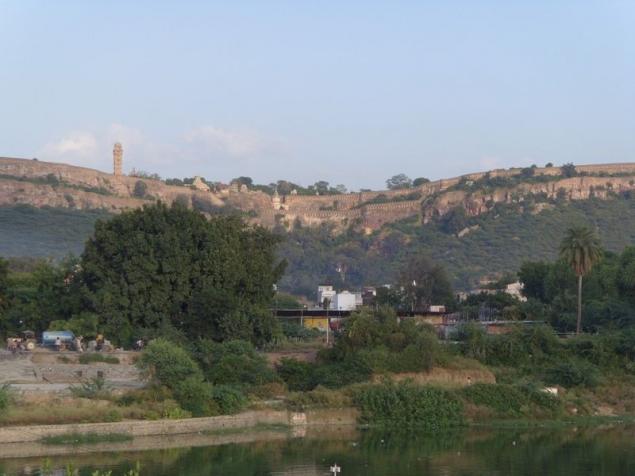
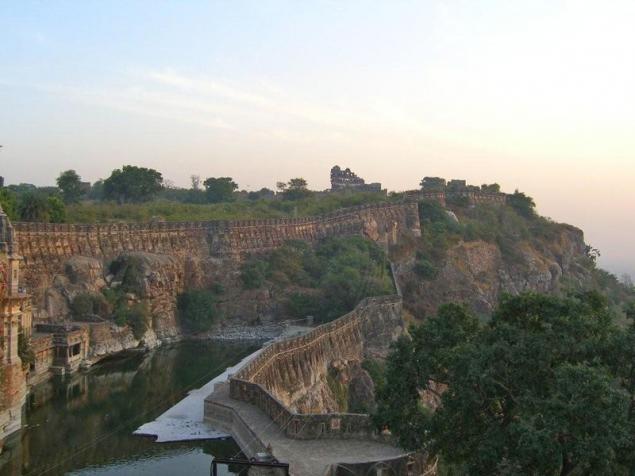
In modern Chittorgahe little reminiscent of the heroic and tragic past. However, here the journey a pleasure and will long be remembered vivid impressions, which many authors have inspired the creation of new works. The fort alternate preserved buildings and ruins.


Preserved temples, palaces and towers are striking splendor, bright Indian sun plays them on the domes and arches. Smooth feminine silhouette figures Rajput warriors and sacred animals artfully decorated the walls of temples. To provide the population and the army fort water in ancient times was built about a hundred artificial reservoirs, of which up to now has reached only about two dozen. Small indoor pools equipped with Buddha images, which is located in the foothills. According to legend, they guard the peace and quiet of the fort. The vast territory inhabited fortress today rather poor villagers, forced a lot and work hard to feed themselves, so in the ruins Chittorgahi not uncommon grazing sheep and cows, here you can meet women working on the farm chores. Fort became home to scores of monkeys, which are usually waiting for travelers around the temples.
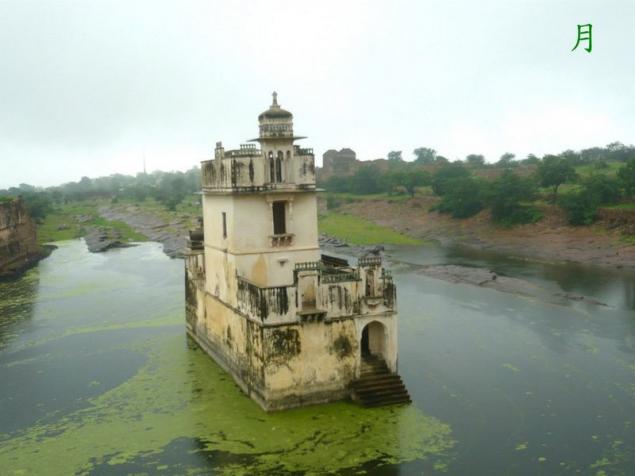
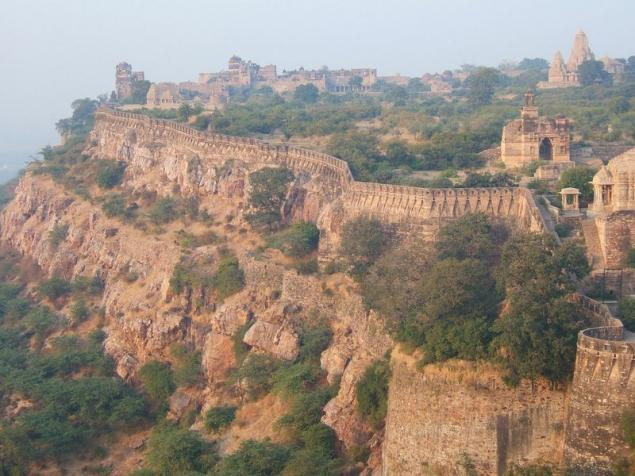
Inside the fortress Chittorgarh are palaces, temples, ponds and water sources. In addition to the palaces are located residential buildings simpler and various housekeeping quartermaster facilities. Marked the cremation Chittora rulers. And, of course, there is arranged an entire underground city - as in every Rajput fortress. Underground, t. E. In the thickness of the rock on which stands the fortress were hiding places and warehouses, tunnels, even living quarters for the people, where it was provided all necessary for life. There were also a repository for documents, books, and other values of the state. In Rajput fortress was provided not only for all of life. And also death. It is located underground room where Rani Chittora with their soplemennitsami three times to make "Jauhar". These ceremonial chamber - nizkie- stone without any ornaments rooms, caves, which is a small entrance; Rani came back home last walled entrance and great sacrifice was accomplished. Historians say that in Jauhar Chittora killed at least 56,000 people. Now it is a sacred place for the Rajputs and for all Indians place.

The castle Chittora are two famous towers of stacked - monuments. Tower of Fame Kirtti Stambha height of 23 m more ancient. It was built in the twelfth century, and all decked multiple rows of Jain sculptures. Tower of Victory Jaya Stambha was built wound Kumbha to commemorate the victory over the Sultan Mahmud Khilji of Malwa in the sixties of the XV century. It rises 37 meters, a nine, inside a staircase of 157 steps, to which tourists are now scrambling to the top of the survey the neighborhood "bird's-eye", and once in the past on the open upper floors of both towers were diluted signaling and festive lights . All tiers of towers decorated with windows on all four sides of the world, columns, porticos. All Jaya Stambha and outside, and inside (including the walls inside, and stairs) covered with sculptures of Hindu gods. Rana Kumbha was the most passionate and prolific builder in history Chittora. The main structures of the fortress were built in the XIII century. and wound Kumbha in the XV century.

From palaces Chittora most certainly famous, Rani Padmini Palace, the one which, according to legend, wanted to get a wife Ala-ud-din Khilji, so besieged and finally took and destroyed the city, and she Rani and other Rajput wife with young children have committed Jauhar. The palace stands on the bank of the pond. He is half-destroyed, but impressive in its full compliance and romantic legend, and the tragic end of the life history. Chittor is considered a model for water fortress. In the rock on which it is located, hit a few sour powerful sources of mineral water. They took a tube and decorated as a place of worship - a cow's mouth "go-mukha" and a pond with water around it. Near the fortress under a rock the river Gambheri. Huge fortress elongated like a ship shape of the green-standing mesa visible for several kilometers. The height of the cliff about 170 m. The length from north to south - 5, 3 km, width - about 800 m. In the center of this area wider than just to the south narrows particularly strong. The whole mountain is covered with forests, where, as they say, inhabited by deer and wild boar, the much-loved Rajputs during the hunt.

Legend has it that Chittor already built in VII. n. e. From VIII. the name of the fortress is associated with the clan Guhilot. That it has taken away from the local ruler Bappoo Raval. Until 1567 Chittor was the capital of Sisodia clan and all of Mewar. Chittor represents a rare type of Rajput Fortress - one that completely covers the whole city with all the buildings and services. Even in the modern era at the foot of the fortress grew new town. In classical times around Chittora were located small villages, from which the city depended on issues of food supply and the inhabitants of which could count on the assistance and protection in the fort during the war danger. Chittor was well fortified and well adapted for life. The greatest destruction of the fortress suffered at the hands of the Mughal invaders at Akbar. Fortress of them fully recovered - first Mughal forbade her to recover, and then left themselves Rajputs "fortress-widow" as a memorial to her heroes, and the capital was moved to a new city of Udaipur. But now there remained a lot of beautiful buildings. Historians note that once lived in Chittore representatives of 18 artisan castes, and all was working.
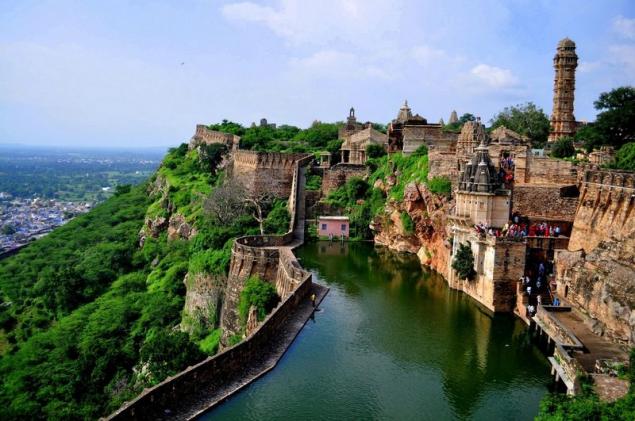
Chittor is surrounded by a thick wall gear; possible approaches to the fortress from the north, east and west; last - the main. Main road length of 1, 5 km protect the seven gates. As the road climbs this serpentine, to strengthen the protection of the serpentine arranged across three through walls perpendicular to the main fortress wall to which they are drawn. Therefore, it seems that all the way to the fortress consists of turns, dead ends and gates. Gates perform in a very important part of the fortress guard and defensive towers, with their fully controlled straight sections of the road. The most important first entrance gate called Gate of Rama, they are half-ruined, but it is obvious that they were once ornate. thread. Built of large stone blocks. On top of them were once two corner towers and a covered gallery between them; destroyed. Proho, (travel) is possible through the wooden double doors. Behind the gate on both sides of closely related facilities for protection - they were covered on poles, destroyed. On the north road with only one goal, on the east - four of them major - the Sun Gate. They are considered the main line of defense. The very jagged fortification built of huge carved stone blokog wild, she double; between rows gallery walls had to pass along it and the parapet. Notched top edge of the outer wall rests w. solid stone belt, freaked loopholes. Embrasures inclined downwardly outwardly, flared towards the outside and have the shape of a shovel. This allows you to attack the enemy and directly under the walls, and in the distance. Double tine, middle holes with looping, which front taper and expand outwards from the inside, allowing the firing side lead imperceptibly. Main protective construction of the fortress belong to the XIII century.


Bundi Taragarh fort was built in 1377 and is considered to be invincible. There are four large reservoir, which makes it independent of external water sources. White marble palaces Bundi were built mainly in the first half of the XVII century. Raja Chhatrasal built a palace Chatri Mahal, "Tower Palace". The palace is located near the lake, on the lake with small islands temples. In this palace in accordance with the preferences of the ruler was set up very good, equipped with the best tools Astronomical Observatory: hence raja watched the movements of the stars in the sky. The palace is richly decorated with wall frescoes, which in general is famous Bund. In the principality formed the Bundi own, especially school Rajput painting - Bundi miniature. Palace cloud "Badal Mahal '- the residence of princesses Bundi. He also decorated with miniatures and fresco murals. Is famous for its picturesque wall panels Chitra Mahal - Painting Palace. At the world-famous paintings in the palaces of the Rajput shown Bundi palace life, solemn processions and meetings lovers. There are illustrations of the epic. In Bundi many beautiful gazebos and pavilions - for outdoor recreation, there are built in the distance, the mountain lakes, summer houses and pavilions. The city produces a less severe impact than many other Rajput fortress, due to its nature and unique location. He really - embodied in stone romantic spirit of the Rajputs.
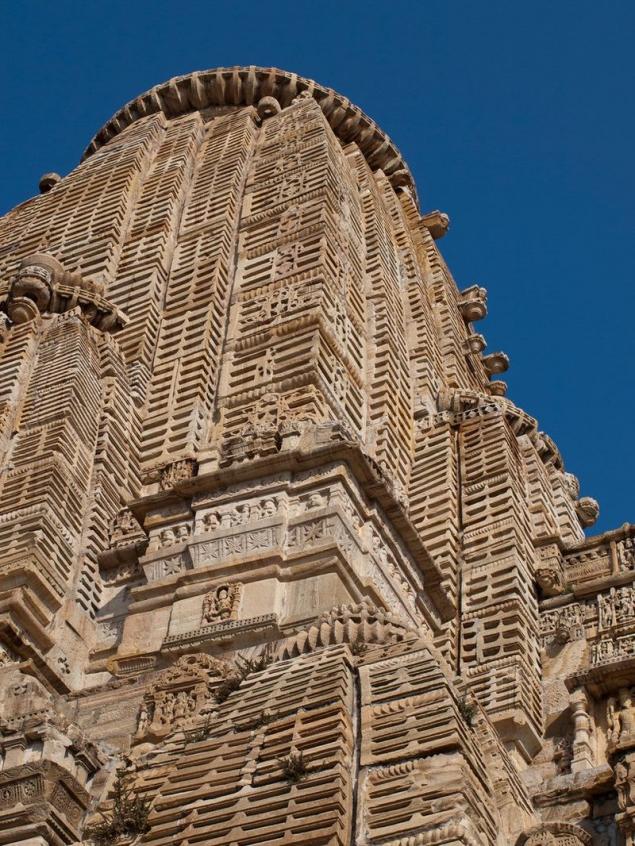
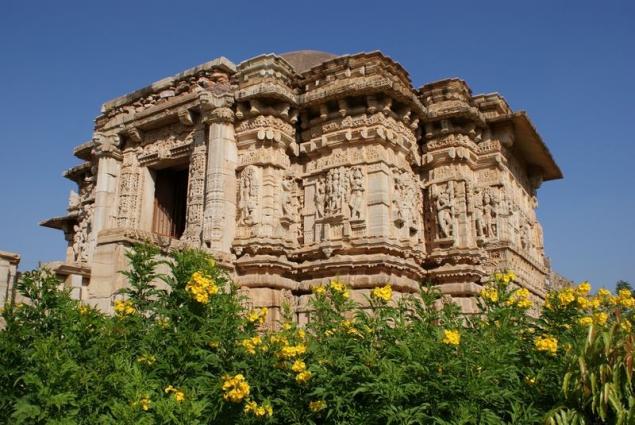
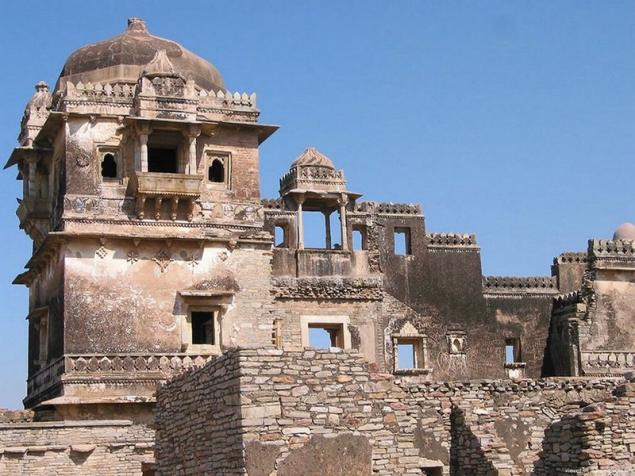

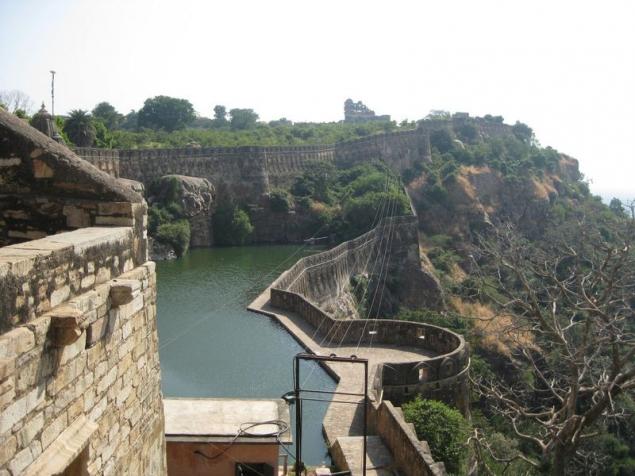
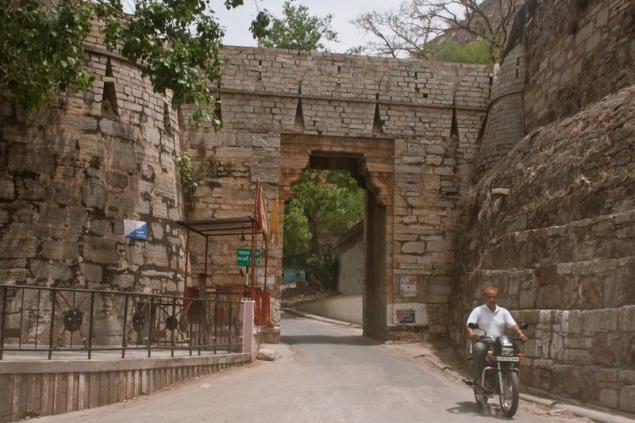
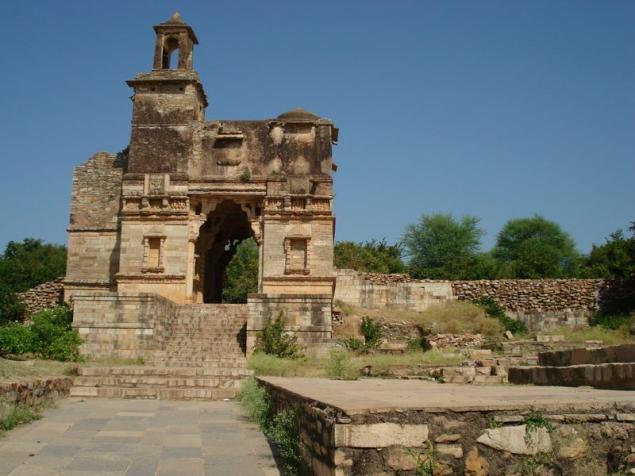
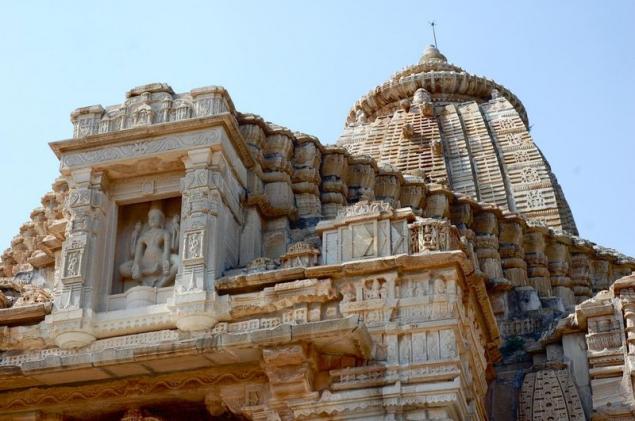
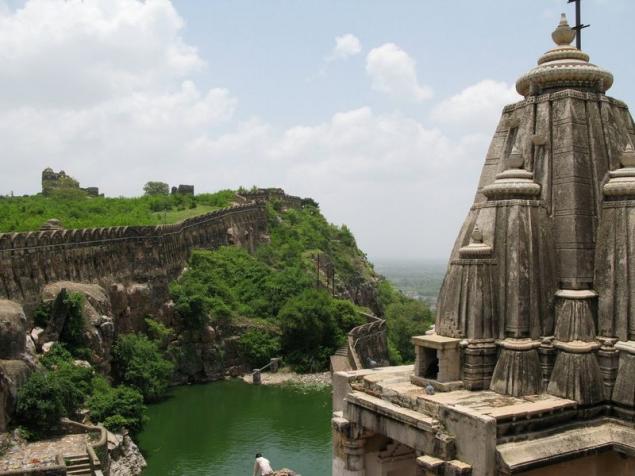
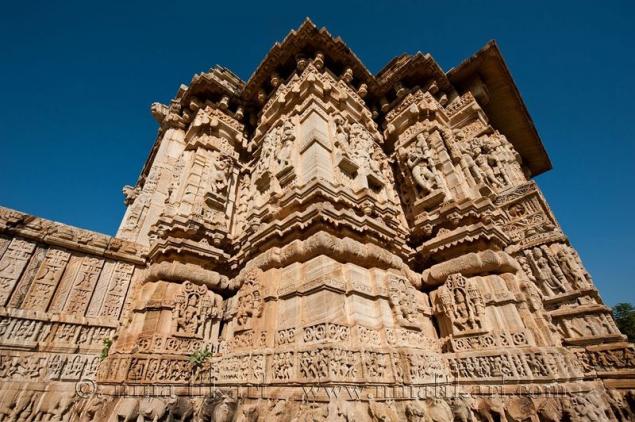
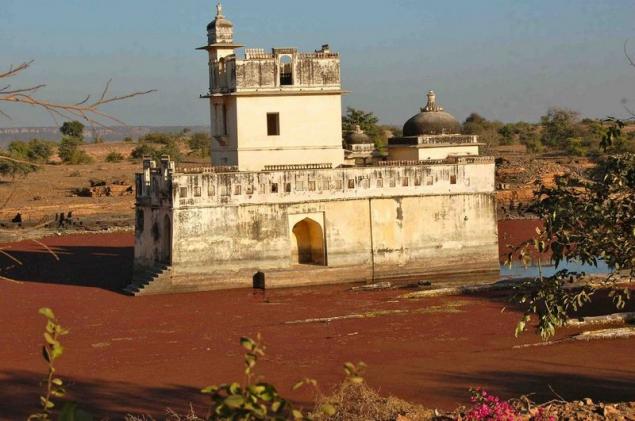

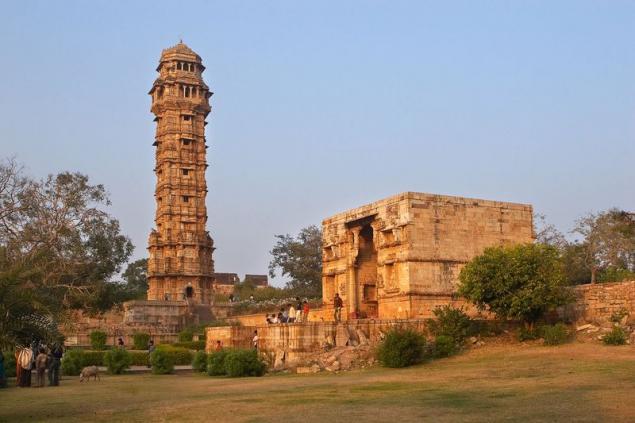
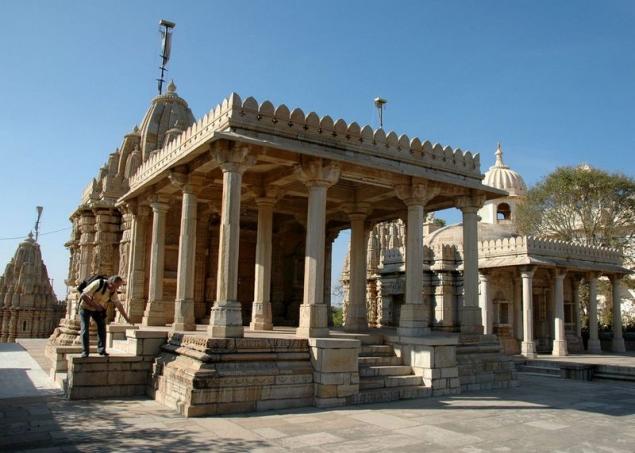

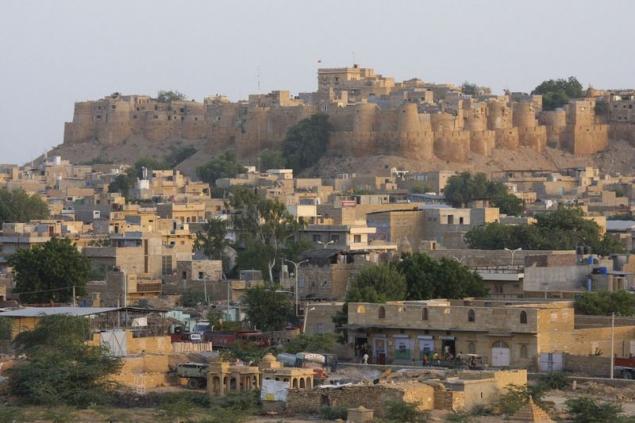

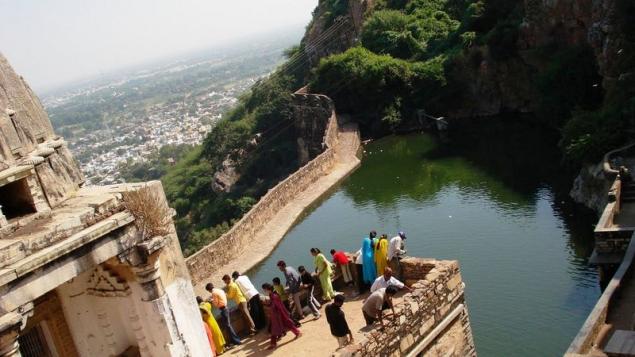
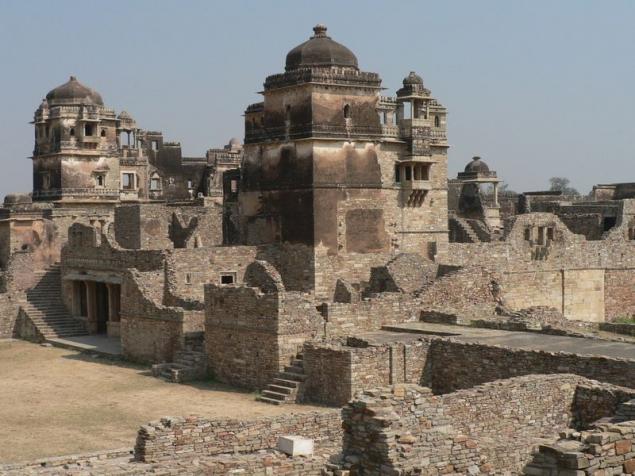

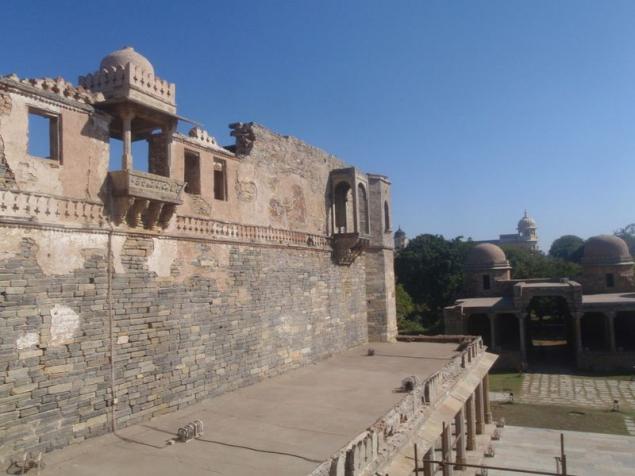

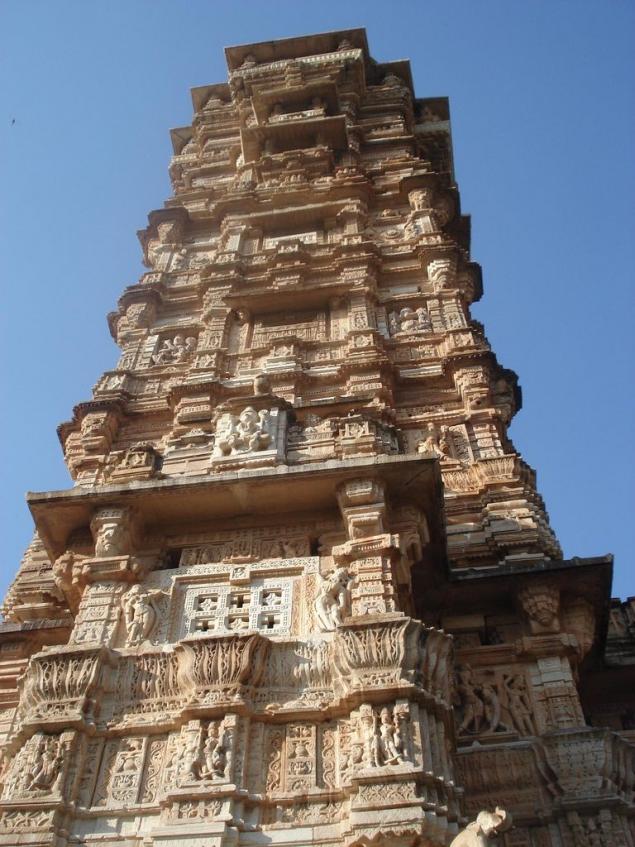
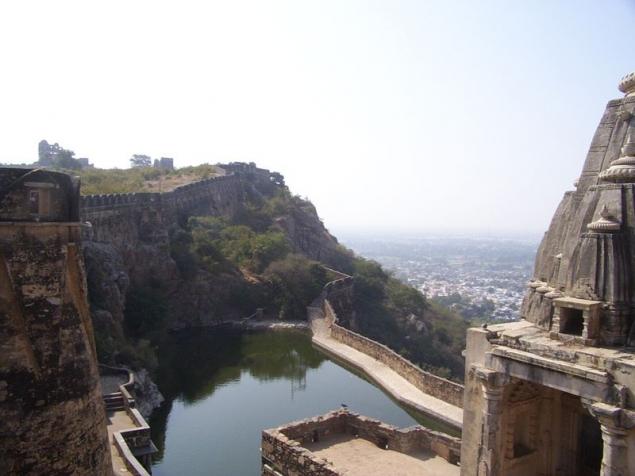
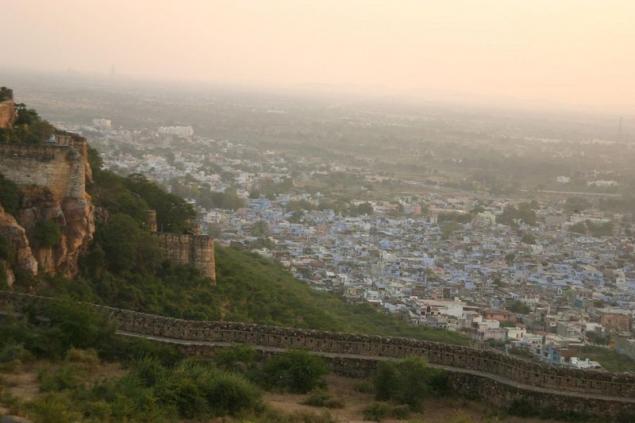
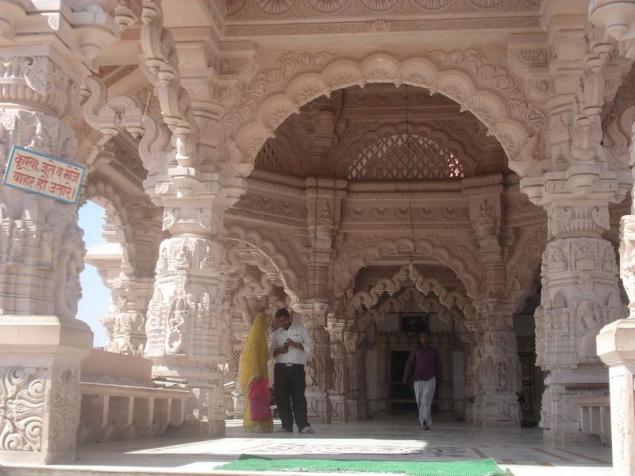
Source: masterok.livejournal.com

Yes, the modern capital is located in Udaipur. However, it was not always so. In the XII century King Fals Ravalpostroil grand city-fort, killing two birds with one stone in this way: the capital and updated, and a dowry for his daughter worthy carved. Chittorgarh Fort is very long, he served as the main residence of the rulers of mevarskih kind Sisodia. This is a huge fortress covers an area of about 300 hectares. Standing on the crest of a high cliff at an altitude of 180 meters, the impregnable fort of Chittorgarh witnessed three battles.

He was always very desirable prey for the Mughal and the first Chittor tried to conquer Delhi Sultan Ala-ud-din, and not only the fortress, but also the beauty queen Rani Padmini. But as soon as the troops of Sultan approached the fortress and men, the defenders of the fort were killed, thousands of women, led by fearless queen committed mass ritual self-immolation (Jauhar). So Ala-ud-din and did not get the desired.
In fierce battles defending the fortress, killing more than 30,000 soldiers Rajputs. Realizing that the capture of the fort - only a matter of time, the Queen, in order to save his honor, made a ritual self-immolation Jauhar. Together with her on fire voluntarily went about another 13 000 women. Deprived of the main goals, Ala-ud-din retreated, thinking that taking the fortress is not worth further casualties. But the bloody history of Chittorgarh is not over. Over the years, Bahadur Shah, the Sultan of Gujarat, made another foray into the impregnable fort. His troops clashed with Arima Rajput queen Ranidzhavaharbay, which appeared to defend the city. Army defenders defeated, the queen died in agony battle. Once again, thousands of women in the walls of the city committed Jauhar, preferring death to captivity. But the fortress stood at this time.

In 1535 he tried to win Chitorh Bahadur Shah. Again, the local women, led this time queen Rani Karnavati committed Jauhar. Again, the enemy was left with nothing. And in 1567 an attempt to take Fort Chittorgarh taken Mongol emperor Akbar. The power of his army was enough to overwhelm the defenses and troops to expel the remnants of the Rajputs of Chittorgarh. Since then, the capital of Rajasthan was moved to Udaipur, and left the fort forever. However, he was not forgotten. Chittorgarh has become a symbol of valor defenders of Rajput valor and women preserve the honor of the cost of their own lives.

Look at this fort and to this day makes think about the valiant Rajputs, who once lived here. Well-designed palaces, magnificent cenotaphs, huge tall tower and now reminded of their brave and proud citizens, not surrendering to the enemy. Two huge towers Stambha Vijay (Victory Pillar) and Kirti Stambha (Pillar of Glory), built at different times, vivid evidence.

Pillar of Fame (Kirti Stambha)

Pillar of Fame (Kirti Stambha) 22 meters high was erected in the 12th century and is dedicated to Rishabha, the first of 24 Tirthankar. "Tirthankara (तीर्थंकर,« builder ford ") - in Jainism person who has attained enlightenment thanks to austerity and became a teacher and an example for all those who seek spiritual guidance. It is believed that tirthakary overcome baser feelings, such as anger, pride, deceit, desire, and built a ford across the "river of human misery».
Victory Pillar (Vijay Stambha)

Victory Pillar (Vijay Stambha) much younger, it was built between 1442 and 1449 years mevarskim ruler Rana Kumbha to commemorate his victory over the combined armies of Malwa and Gujarat led by Mahmoud Khilji and dedicated to the god Vishnu. Many names tower plates contain the genealogy of the rulers of Chittorgarh Hamir until the Rana Kumbha. A great number of names sculptures of gods and goddesses, covering the entire tower can serve this tutorial Hindu iconography.
The city is already in the old days was provided with everything necessary, as evidenced, for example, extant reservoir. During the many sieges of this pool was the main source of water in the fort. Very beautiful place, covered with romance, despite this dramatic story. And even now, the local women washing laundry in it.


Rana Kumbha Palace is the largest and oldest palace Chittorgarh. Here was born the founder of the city of Udaipur Maharana Udai Singh. From his birth is a legend or rather the real story. Faithful maid Panna Dhay saved future ruler of enemies, replacing it on his own son as bait, and the little prince took a safety in a basket of fruit. As a result, her son was killed, and Maharana Udai Singh was saved. Also lived here the famous saint poet Rani World. This is the same palace, in the basement of which was arranged funeral pyre, where Rani Padmini along with other women committed Jauhar.

And here is the Palace of Rani Padmini itself.


It was in this palace of Ala-ud-din was allowed to see in a mirror image of Rani Padmini, the wife of Maharana Rattan Singh. The mirror was placed under such an angle that as he did not turn, could not see the room of the queen, whose beauty is comparable with the Cleopatra, and the history of life were eternal legend in the history Mevarskogo state. Unfortunately, reliable images beauty has been preserved, we can only speculate about it, as she looked. That's how it is represented in the Indian cinema

Opposite the palace of Rani Padmini is the oldest temple Chittorgarh Kalika Mata Temple (Kalika Mata Temple), built in the 8th century to the Sun God, but in the 14th century was converted into a temple of the mother goddess Kali. And until now, pilgrims come here to worship the goddess.

In Chittorgarh just over 130 temples, both existing and dilapidated and abandoned populated by monkeys after they have left the people. But the Fort Chittorgarh is very famous and popular, it is difficult to find a place untouched by the tourist or pilgrim.

Today Chittorgarh - a popular tourist attraction. It is the largest fortress in Rajasthan, besides very well preserved. On the territory of the fort was more than 130 temples. Most of them are in ruins or partially destroyed, but some have survived virtually intact. Having been here, it's hard to believe in bloody past Rajput fortress. Fort picturesque, the weather is usually sunny, and the overall impression created exclusively positive. Among the ruins of ancient palaces, temples and other remains of buildings stands tall tower Vijaya Stambaha. This is an eight wonder of ancient architecture perfectly preserved, drawing attention to each guest Chittorgarh. On the territory of the fort, in the "old town" is still inhabited. Their life is simple and looks more like a village than in the city. A feeling that for a long time almost nothing has changed. Except that instead of hordes of cruel invaders Chittorgarh now attacking troops armed with cameras tourists.



In modern Chittorgahe little reminiscent of the heroic and tragic past. However, here the journey a pleasure and will long be remembered vivid impressions, which many authors have inspired the creation of new works. The fort alternate preserved buildings and ruins.


Preserved temples, palaces and towers are striking splendor, bright Indian sun plays them on the domes and arches. Smooth feminine silhouette figures Rajput warriors and sacred animals artfully decorated the walls of temples. To provide the population and the army fort water in ancient times was built about a hundred artificial reservoirs, of which up to now has reached only about two dozen. Small indoor pools equipped with Buddha images, which is located in the foothills. According to legend, they guard the peace and quiet of the fort. The vast territory inhabited fortress today rather poor villagers, forced a lot and work hard to feed themselves, so in the ruins Chittorgahi not uncommon grazing sheep and cows, here you can meet women working on the farm chores. Fort became home to scores of monkeys, which are usually waiting for travelers around the temples.


Inside the fortress Chittorgarh are palaces, temples, ponds and water sources. In addition to the palaces are located residential buildings simpler and various housekeeping quartermaster facilities. Marked the cremation Chittora rulers. And, of course, there is arranged an entire underground city - as in every Rajput fortress. Underground, t. E. In the thickness of the rock on which stands the fortress were hiding places and warehouses, tunnels, even living quarters for the people, where it was provided all necessary for life. There were also a repository for documents, books, and other values of the state. In Rajput fortress was provided not only for all of life. And also death. It is located underground room where Rani Chittora with their soplemennitsami three times to make "Jauhar". These ceremonial chamber - nizkie- stone without any ornaments rooms, caves, which is a small entrance; Rani came back home last walled entrance and great sacrifice was accomplished. Historians say that in Jauhar Chittora killed at least 56,000 people. Now it is a sacred place for the Rajputs and for all Indians place.

The castle Chittora are two famous towers of stacked - monuments. Tower of Fame Kirtti Stambha height of 23 m more ancient. It was built in the twelfth century, and all decked multiple rows of Jain sculptures. Tower of Victory Jaya Stambha was built wound Kumbha to commemorate the victory over the Sultan Mahmud Khilji of Malwa in the sixties of the XV century. It rises 37 meters, a nine, inside a staircase of 157 steps, to which tourists are now scrambling to the top of the survey the neighborhood "bird's-eye", and once in the past on the open upper floors of both towers were diluted signaling and festive lights . All tiers of towers decorated with windows on all four sides of the world, columns, porticos. All Jaya Stambha and outside, and inside (including the walls inside, and stairs) covered with sculptures of Hindu gods. Rana Kumbha was the most passionate and prolific builder in history Chittora. The main structures of the fortress were built in the XIII century. and wound Kumbha in the XV century.

From palaces Chittora most certainly famous, Rani Padmini Palace, the one which, according to legend, wanted to get a wife Ala-ud-din Khilji, so besieged and finally took and destroyed the city, and she Rani and other Rajput wife with young children have committed Jauhar. The palace stands on the bank of the pond. He is half-destroyed, but impressive in its full compliance and romantic legend, and the tragic end of the life history. Chittor is considered a model for water fortress. In the rock on which it is located, hit a few sour powerful sources of mineral water. They took a tube and decorated as a place of worship - a cow's mouth "go-mukha" and a pond with water around it. Near the fortress under a rock the river Gambheri. Huge fortress elongated like a ship shape of the green-standing mesa visible for several kilometers. The height of the cliff about 170 m. The length from north to south - 5, 3 km, width - about 800 m. In the center of this area wider than just to the south narrows particularly strong. The whole mountain is covered with forests, where, as they say, inhabited by deer and wild boar, the much-loved Rajputs during the hunt.

Legend has it that Chittor already built in VII. n. e. From VIII. the name of the fortress is associated with the clan Guhilot. That it has taken away from the local ruler Bappoo Raval. Until 1567 Chittor was the capital of Sisodia clan and all of Mewar. Chittor represents a rare type of Rajput Fortress - one that completely covers the whole city with all the buildings and services. Even in the modern era at the foot of the fortress grew new town. In classical times around Chittora were located small villages, from which the city depended on issues of food supply and the inhabitants of which could count on the assistance and protection in the fort during the war danger. Chittor was well fortified and well adapted for life. The greatest destruction of the fortress suffered at the hands of the Mughal invaders at Akbar. Fortress of them fully recovered - first Mughal forbade her to recover, and then left themselves Rajputs "fortress-widow" as a memorial to her heroes, and the capital was moved to a new city of Udaipur. But now there remained a lot of beautiful buildings. Historians note that once lived in Chittore representatives of 18 artisan castes, and all was working.

Chittor is surrounded by a thick wall gear; possible approaches to the fortress from the north, east and west; last - the main. Main road length of 1, 5 km protect the seven gates. As the road climbs this serpentine, to strengthen the protection of the serpentine arranged across three through walls perpendicular to the main fortress wall to which they are drawn. Therefore, it seems that all the way to the fortress consists of turns, dead ends and gates. Gates perform in a very important part of the fortress guard and defensive towers, with their fully controlled straight sections of the road. The most important first entrance gate called Gate of Rama, they are half-ruined, but it is obvious that they were once ornate. thread. Built of large stone blocks. On top of them were once two corner towers and a covered gallery between them; destroyed. Proho, (travel) is possible through the wooden double doors. Behind the gate on both sides of closely related facilities for protection - they were covered on poles, destroyed. On the north road with only one goal, on the east - four of them major - the Sun Gate. They are considered the main line of defense. The very jagged fortification built of huge carved stone blokog wild, she double; between rows gallery walls had to pass along it and the parapet. Notched top edge of the outer wall rests w. solid stone belt, freaked loopholes. Embrasures inclined downwardly outwardly, flared towards the outside and have the shape of a shovel. This allows you to attack the enemy and directly under the walls, and in the distance. Double tine, middle holes with looping, which front taper and expand outwards from the inside, allowing the firing side lead imperceptibly. Main protective construction of the fortress belong to the XIII century.


Bundi Taragarh fort was built in 1377 and is considered to be invincible. There are four large reservoir, which makes it independent of external water sources. White marble palaces Bundi were built mainly in the first half of the XVII century. Raja Chhatrasal built a palace Chatri Mahal, "Tower Palace". The palace is located near the lake, on the lake with small islands temples. In this palace in accordance with the preferences of the ruler was set up very good, equipped with the best tools Astronomical Observatory: hence raja watched the movements of the stars in the sky. The palace is richly decorated with wall frescoes, which in general is famous Bund. In the principality formed the Bundi own, especially school Rajput painting - Bundi miniature. Palace cloud "Badal Mahal '- the residence of princesses Bundi. He also decorated with miniatures and fresco murals. Is famous for its picturesque wall panels Chitra Mahal - Painting Palace. At the world-famous paintings in the palaces of the Rajput shown Bundi palace life, solemn processions and meetings lovers. There are illustrations of the epic. In Bundi many beautiful gazebos and pavilions - for outdoor recreation, there are built in the distance, the mountain lakes, summer houses and pavilions. The city produces a less severe impact than many other Rajput fortress, due to its nature and unique location. He really - embodied in stone romantic spirit of the Rajputs.


























Source: masterok.livejournal.com

